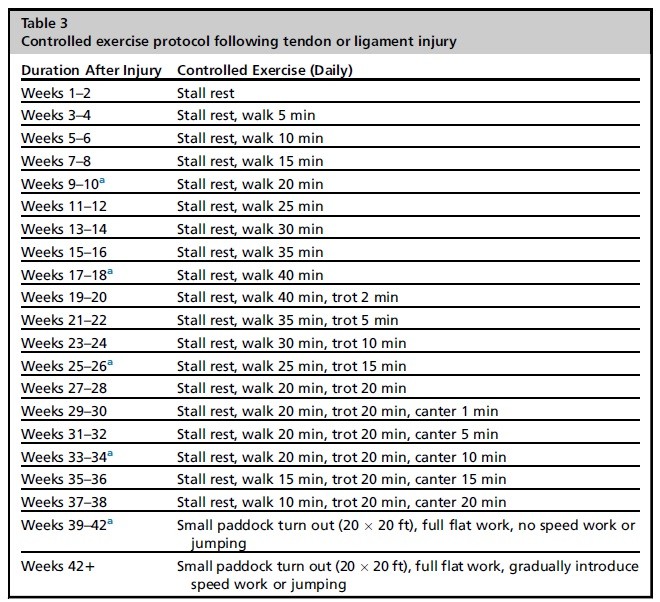
Controlled mobilisation after tendon injuries
Tissue healing can roughly be divided in three stages: inflammation, proliferation and maturation. The first 7 days are reserved for the inflammation stage. After this the proliferation phase starts: various kinds of cells are produced, and the healing starts. In this stage, the tissue is very vulnerable: the connective tissue is young and unorganised, when overworked it will injure easily. After 21 days the last phase kicks off: maturation and remodelling.
Controlled exercise during the remodelling stage will help the tendon become strong and stress-resistant, increasing their chances of returning to work. When tendons are immobilised or lack stimulation by movement, the fibres remain unorganised and weak. Conversely, exorbitant load will retard or put off the healing process. The correct dosage and duration of the rehabilitation is critical: horses with less than 6 months of rest, have a poorer prognosis.
To achieve a good rehabilitation the extent of the injury must be known, as well as the horse’s ability to tolerate prolonged stall rest. Usually, horses will adapt better than their owners expect.
The treatment differs depending on the phase the injury is in. In phase 1 complete stall rest is advised, perhaps complemented with ice and compression. During phase 2 it is key to introduce movement whilst protecting the vulnerable, healing tissue. Stall rest with short periods of walking are of the order. After this, a carefully constructed exercise program to enhance healing is needed. The program should be adapted to fit the horse’s individual characteristics; however, general recommendations can give you a starting point. Keep in mind that continuous monitoring is vital, and whenever needed, intensity should be decreased!
Expert opinion by Charlotte De Bruyne
Tendon injuries are frequent amongst horses. In spite of the high prevalence, rehabilitation lacks standardisation and many owners feel unsure when putting the horse back into work. They appreciate being given clear guidelines which will help them through the extensive process. Each program should be tailored to the horse’s specific needs and the facilities available.
> From: Davidson, Vet Clin North Am Equine Pract. 32 (2016) 159-65 (Epub ahead of print). All rights reserved to 2016 Elsevier Inc.. Click here for the online summary.


